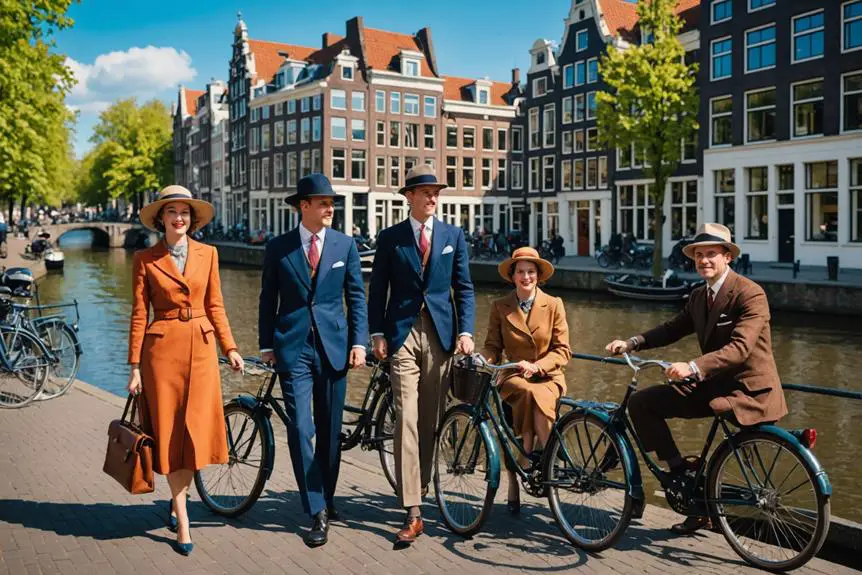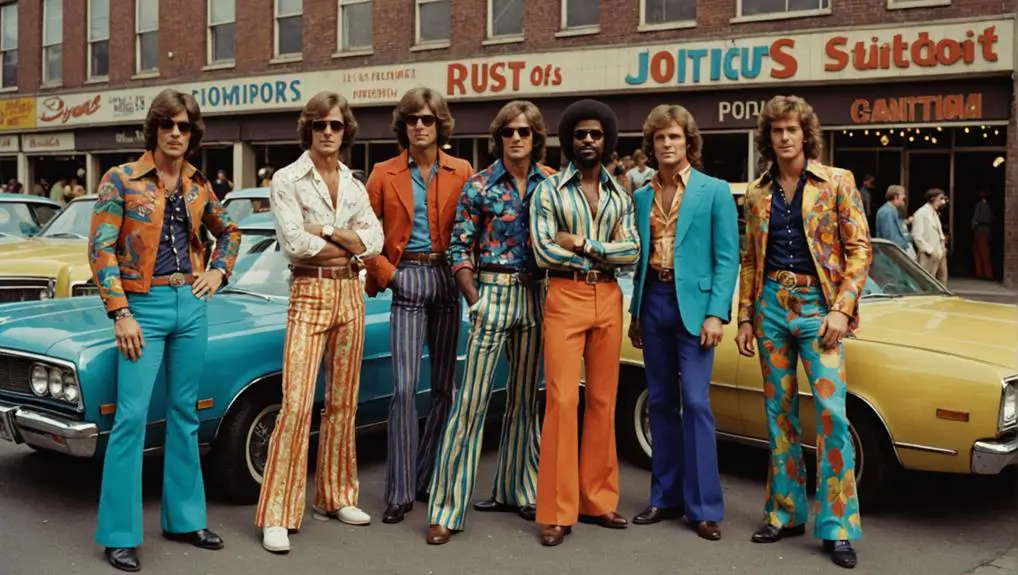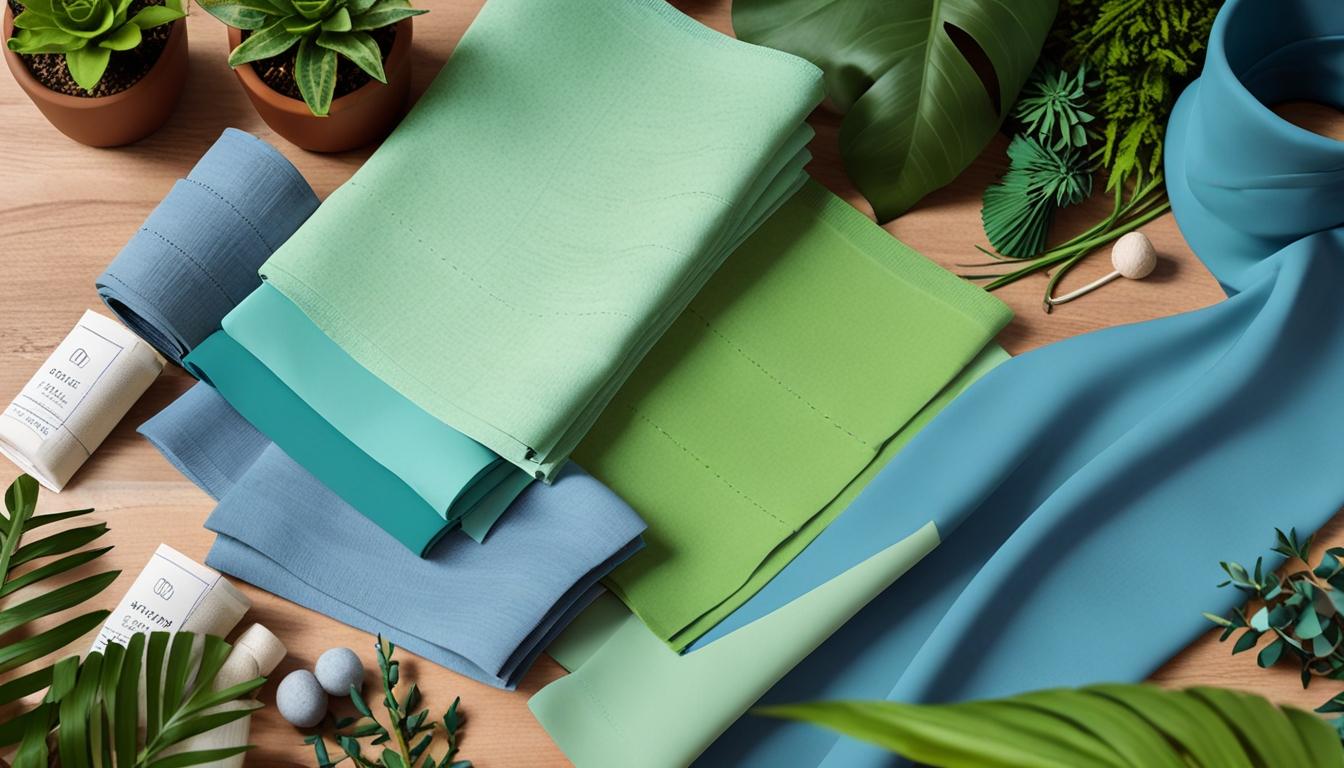When you consider the outfits in "Amsterdam" (2022), it's clear that costume design plays a pivotal role in shaping the film's narrative. Each character's attire not only reflects their personality but also the vibrant aesthetics of the 1930s. For instance, Margot Robbie's striking black ensembles and Christian Bale's eccentric tweed suits tell their stories without uttering a word. But what makes these designs particularly compelling is how they intertwine with the film's themes and historical context, prompting you to think about the deeper implications of fashion in storytelling. What details might you overlook?
Film Overview
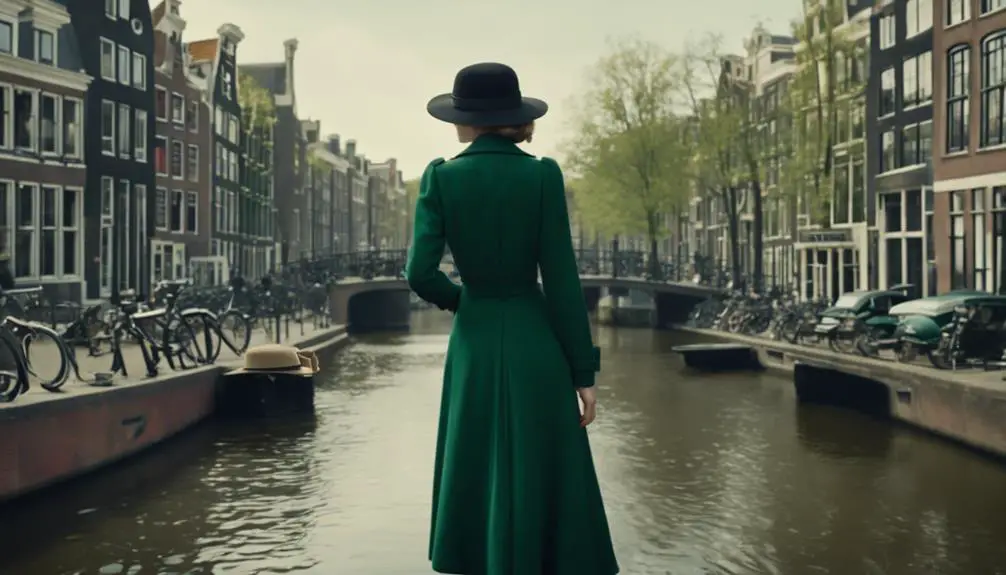
"Amsterdam" (2022) is a dramedy directed and written by David O. Russell, featuring a remarkable cast including Christian Bale, Margot Robbie, and John David Washington. Set against the backdrop of the vibrant 1930s, the film weaves a complex tale of friendship, loyalty, and betrayal as three friends find themselves entwined in a murder conspiracy. This unique blend of humor and drama invites you to explore not just the plot, but the rich historical context that shapes the characters' lives, reminiscent of the popular decades and styles that define vintage clothing.
The film runs for 2 hours and 14 minutes, delivering an enthralling experience that, despite receiving mixed reviews—holding an IMDb rating of 6.1/10 from around 97,000 ratings—offers an engaging narrative filled with twists and turns. One of the standout elements of "Amsterdam" is its costume design by J.R. Hawbaker, which brilliantly showcases outfits reflecting both the bohemian aesthetics of the 1910s and the glamour of the 1930s. These outfits not only enhance the visual appeal but also serve to deepen your understanding of the characters and the era they inhabit.
With notable cameos from legends like Robert De Niro and Taylor Swift, "Amsterdam" has cultivated a dynamic cultural landscape that resonates with viewers. As you immerse yourself in this film, you'll appreciate how the outfits complement the storytelling, enriching the overall experience and bringing the unique world of "Amsterdam" to life.
Character Costume Highlights
In "Amsterdam," the costumes play an essential role in shaping the characters and enhancing the narrative. Margot Robbie's character, Valerie, stands out with her distinctive black mid-length coat made from a luxurious wool blend. This coat, paired with a silk flower scarf, perfectly encapsulates her mysterious persona, drawing you into her complex world. Each time you see Valerie, her ensemble echoes the film's historical setting while also hinting at her layered personality. The use of fabrics like tweed, known for its durability and warmth, can also be seen in various characters' outfits, emphasizing the film's period authenticity, particularly in outdoor scenes where weather-resistant features are essential the distinctive woven fabric.
On the other hand, Christian Bale's Burt Berendsen is a delightful contrast. He's outfitted in stylish, slouchy tweed three-piece suits, which not only reflect his quirky character traits but also the bohemian aesthetics of the 1910s. The addition of a cowboy-style hat made from 100% wool adds a unique flair, showcasing his individuality amidst the ensemble cast.
Moreover, there's a dynamic chemistry between Robbie and Anya Taylor-Joy, who portrays Libby. Libby's vibrant outfits stand in stark contrast to Valerie's consistent black attire, further enhancing the character dynamics and emphasizing their differing personalities. The attention to detail in each character's costume, from Burt's moisture-wicking shirt to the elegant structure of Valerie's finale gown, adds depth to their portrayals. This meticulous costume design by J.R. Hawbaker not only reflects the glamour of the 1930s but also immerses you in the film's rich historical context, making every scene visually engaging.
Key Costume Designs
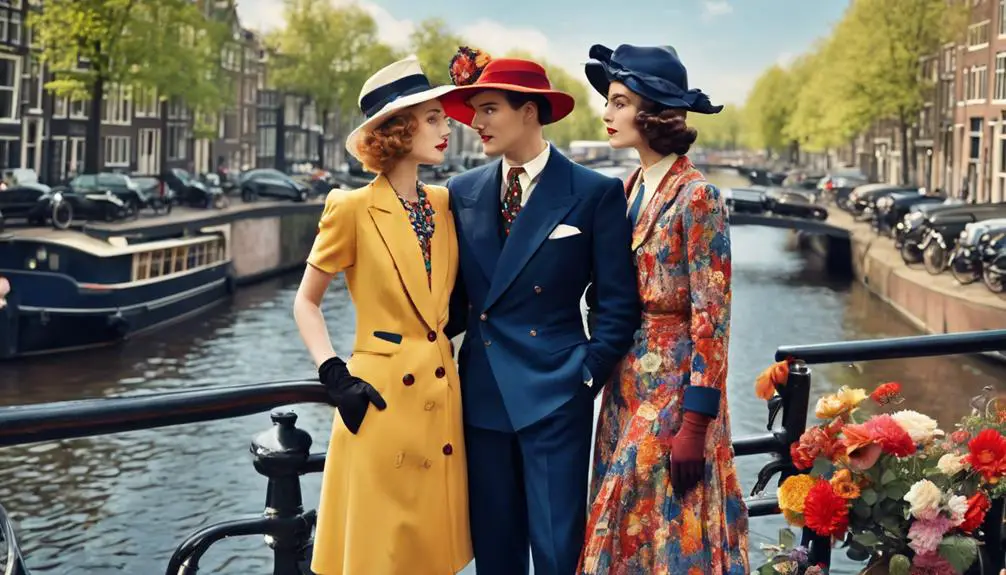
Frequently, the costumes in *Amsterdam* reveal the intricate layers of each character, showcasing their personalities and the film's historical context. Designed by J.R. Hawbaker, known for his remarkable work in films like *The Revenant* and *American Hustle*, the costume design beautifully merges the bohemian flair of the 1910s with the glamour of the 1930s.
Take Margot Robbie's character, Valerie, for instance. She consistently dons a striking black coat, featuring a wool blend and a wide collar that sets her apart from the vibrant red outfits worn by other female characters. This black coat isn't just a piece of clothing; it symbolizes her strong, independent spirit, contrasting with the lively hues surrounding her.
On the other hand, Christian Bale's character, Burt Berendsen, embraces a quirky style that perfectly captures his eccentric personality. His wool blend blazer paired with a cowboy-style hat and tailored cotton-spandex blend pants showcases both comfort and character.
Anya Taylor-Joy's character, Libby, complements Robbie's Valerie with stylish outfits that highlight their chemistry, emphasizing the film's commitment to character-driven fashion. The costume design in *Amsterdam* really emphasizes the socio-political context of the 1930s, using rich textures and layered styles to evoke authenticity and depth.
Accessory Details
Accessories play an integral role in defining the characters' styles and enhancing their overall looks in *Amsterdam*. Valerie's wool felt hat, with its adjustable sweatband, is a perfect representation of 1930s fashion, combining comfort with style. This hat not only keeps her looking chic but also reflects the era's aesthetic, showcasing the natural elasticity and durability of wool as a material. Meanwhile, her lightweight silk scarf, measuring 34.5 x 34.5 inches, adds a touch of elegance to her outfits, demonstrating the significance of gentle care techniques for maintaining vintage textiles. The scarf's delicate fabric flows gracefully, showcasing Valerie's sophistication and attention to detail, making her stand out in a crowd.
On the other hand, Burt's cowboy-style hat brings a classic Western flair to his ensemble. Made from 100% wool and featuring a genuine leather sweatband, this accessory not only enhances his rugged persona but also guarantees comfort during long wear. The hat's timeless design complements his character perfectly, embodying the adventurous spirit of the film.
Both characters sport long-sleeve shirts with buttoned cuffs, contributing to a polished and refined look that suits the film's historical setting. Burt further elevates his formal attire with a tie crafted from 1200 stitches woven polyester silk. This detail assures durability and a wrinkle-free appearance, ensuring he always looks sharp.
These carefully chosen accessories not only enhance each character's individual style but also play a crucial role in immersing viewers in the film's rich period ambiance, making every outfit memorable and impactful.
Costume Impact on Story

Costumes in *Amsterdam* aren't just about aesthetics; they play an essential role in storytelling. Designed by J.R. Hawbaker, the costumes reflect the bohemian vibes of the 1910s and the glam of the 1930s, enhancing both period authenticity and character depth. As you watch, you'll notice how Margot Robbie's character, Valerie, consistently dons black outfits. This choice symbolizes her mysterious past and creates a striking contrast with the vibrant red attire worn by other female characters, emphasizing her unique narrative arc.
Christian Bale's Burt Berendsen sports quirky, tailored suits that not only highlight his eccentric personality but also connect him to the socio-political climate of the 1930s. His costumes become a window into his character traits, revealing layers of complexity and aligning him with the broader historical context. The use of accessories, like Valerie's flower scarf and Burt's cowboy hat, further establishes their individual identities, reinforcing themes of friendship and loyalty that are central to the film.
Fashion Trends in Film
As you plunge into *Amsterdam*, you'll notice how the film captures 1930s fashion trends, illustrating the era's unique style while enhancing character development. The costumes are a delightful expression of the time, with Burt Berendsen, played by Christian Bale, donning slouchy tweed three-piece suits and bowties that embody the relaxed yet sophisticated vibe of the decade. This attention to detail not only reflects the aesthetics of the period but also serves as a crucial element of character representation.
Margot Robbie's character, Valerie, consistently opts for striking black attire, which stands in sharp contrast to the vibrant colors worn by other female characters. This choice isn't just about style; it cleverly highlights her personality and emotional depth. Costume designer J.R. Hawbaker meticulously crafted outfits that resonate with the characters' arcs, showcasing how fashion trends can enhance narrative storytelling.
Moreover, the film's accessories, like wool felt hats and silk scarves, add authenticity and flair, reinforcing the significance of every detail in period films. As you watch, you'll see how *Amsterdam* joins a growing trend in modern cinema where character-driven fashion plays a crucial role in storytelling. This influence extends beyond the screen, impacting contemporary menswear and inspiring current fashion trends. It's a fascinating reminder that what characters wear can reveal so much about who they are, making fashion an integral part of cinematic storytelling.
Frequently Asked Questions
Was Taylor Swift in the Amsterdam Movie?
Imagine a shimmering star briefly lighting up a darkened room; yes, Taylor Swift's role in the movie "Amsterdam" adds a sprinkle of magic. Though her part's small, it shines like a note in the soundtrack.
Is Burt Berendsen Based on a Real Person?
Burt Berendsen isn't based on a real person; he reflects broader themes of friendship and loyalty. His character development draws from historical sentiments, blending fiction and reality to create a unique narrative experience.
What Is the Story of the Amsterdam?
You might think it's just a murder mystery, but the story of Amsterdam investigates deeper. It explores character motivations against a rich historical context, revealing how friendships endure through betrayal and societal challenges.
What Was the Point of the Movie Amsterdam?
The point of the movie's to highlight character motivations amid historical context. You see how friendship and loyalty shape decisions, reflecting the impact of personal connections on steering challenges during turbulent times.
